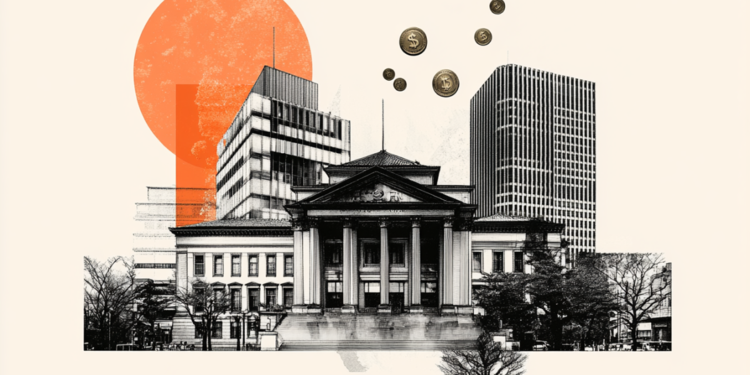- The Euro regains its smile against the US dollar.
- European stocks open Thursday’s session on a mixed note.
- ECB President Christine Lagarde speaks later in the session.
The Euro (EUR) manages to generate some bullish traction against the US Dollar (USD), motivating the EUR/USD to attempt a warm rebound towards the 1.0860 area on Thursday.
The Dollar alternates gains with losses around 104.40, according to the USD Index (DXY)amid a broad-based decline in US yields and stronger market buzz around the start of interest rate cuts by the Federal Reserve (Fed) sometime in the summer of 2024.
Speculation about possible Fed interest rate cuts has intensified following the publication earlier this week of lower-than-estimated inflation figures (CPI and PPI).
There are no macroeconomic data on the national calendar, but the president of the ECB, Christine Lagarde, will speak at an event in Frankfurt.
In the United States, weekly unemployment benefit claims, the Philadelphia Fed manufacturing index, industrial production and the NAHB Housing Market Index will be published.
Daily Market Summary: Euro Rebounds as Dollar Deflates
- The Euro regains bullish momentum against the Dollar.
- US and German yields trade on the defensive on Thursday.
- Market participants are speculating that the Fed will cut rates in the first half of 2024.
- Investors favor a prolonged pause from the ECB.
- Rumors of intervention in the foreign exchange market continue to revolve around USD/JPY.
- The ECB’s Andrea Enria, Luis De Guindos and Christine Lagarde will speak later.
- In the US, weekly initial claims and the Philadelphia Fed index will be the protagonists.
- Australia reported a strong labor market report in October.
Technical Analysis: Euro seeks possible test of 1.0945
EUR/USD advances modestly on Thursday, returning to the upper end of the recent range.
The November high of 1.0887 (Nov 14) is emerging as the next target to watch for EUR/USD ahead of the weekly high of 1.0945 (Aug 30) and the psychological level of 1.1000. The breakout of this zone could pave the way for a visit to the August high of 1.1064 (Aug 10) and another weekly high of 1.1149 (July 27), all ahead of the 2023 high of 1.1275 (July 18).
Occasional weakness may lead the pair to test the temporary support of the 55-day SMA at 1.0639, ahead of the weekly low of 1.0495 (Oct 13) and the 2023 low of 1.0448. (October 15th).
Longer term, the pair’s outlook should remain positive as long as it remains above the 200-day SMA at 1.0803.
Frequently asked questions about the Euro
What is the Euro?
The Euro is the currency of the 20 countries of the European Union that belong to the euro zone. It is the second most traded currency in the world, behind the US dollar. In 2022, it accounted for 31% of all foreign exchange transactions, with an average daily volume of more than $2.2 trillion per day.
EUR/USD is the most traded currency pair in the world, accounting for an estimated 30% of all transactions, followed by EUR/JPY (4%), EUR/GBP (3%) and EUR/AUD (2% ).
What is the ECB and how does it influence the Euro?
The European Central Bank (ECB), headquartered in Frankfurt, Germany, is the reserve bank of the euro zone. The ECB sets interest rates and manages monetary policy
The ECB’s main mandate is to maintain price stability, which means controlling inflation or stimulating growth. Its main instrument is to raise or lower interest rates. Relatively high interest rates – or the expectation of higher rates – tend to benefit the Euro and vice versa.
The Governing Council of the ECB takes monetary policy decisions at meetings held eight times a year. Decisions are made by the heads of the eurozone’s national banks and six permanent members, including ECB President Christine Lagarde.
How do inflation data influence the value of the Euro?
Eurozone inflation data, measured by the Harmonized Index of Consumer Prices (HICP), are important econometric data for the euro. If inflation rises more than expected, especially if it exceeds the 2% target set by the ECB, it is forced to raise interest rates to bring it back under control.
Relatively high interest rates compared to their peers tend to benefit the Euro, as it makes the region more attractive as a place for global investors to park their money.
How do economic data influence the value of the Euro?
Data releases measure the health of the economy and can influence the Euro. Indicators such as GDP, manufacturing and services PMIs, employment and consumer sentiment surveys can influence the direction of the single currency.
A strong economy is good for the Euro. Not only does it attract more foreign investment, but it may encourage the ECB to raise interest rates, which will directly strengthen the Euro. Conversely, if economic data is weak, the Euro is likely to fall.
The economic data for the four largest economies in the eurozone (Germany, France, Italy and Spain) are especially significant, as they represent 75% of the eurozone economy.
How does the trade balance affect the Euro?
Another important release for the euro is the trade balance. This indicator measures the difference between what a country earns from its exports and what it spends on imports during a given period.
If a country produces highly sought-after export products, its currency will appreciate due to the additional demand created by foreign buyers wishing to purchase these goods. Therefore, a positive net trade balance strengthens a currency and vice versa for a negative balance.
Source: Fx Street
I am Joshua Winder, a senior-level journalist and editor at World Stock Market. I specialize in covering news related to the stock market and economic trends. With more than 8 years of experience in this field, I have become an expert in financial reporting.







